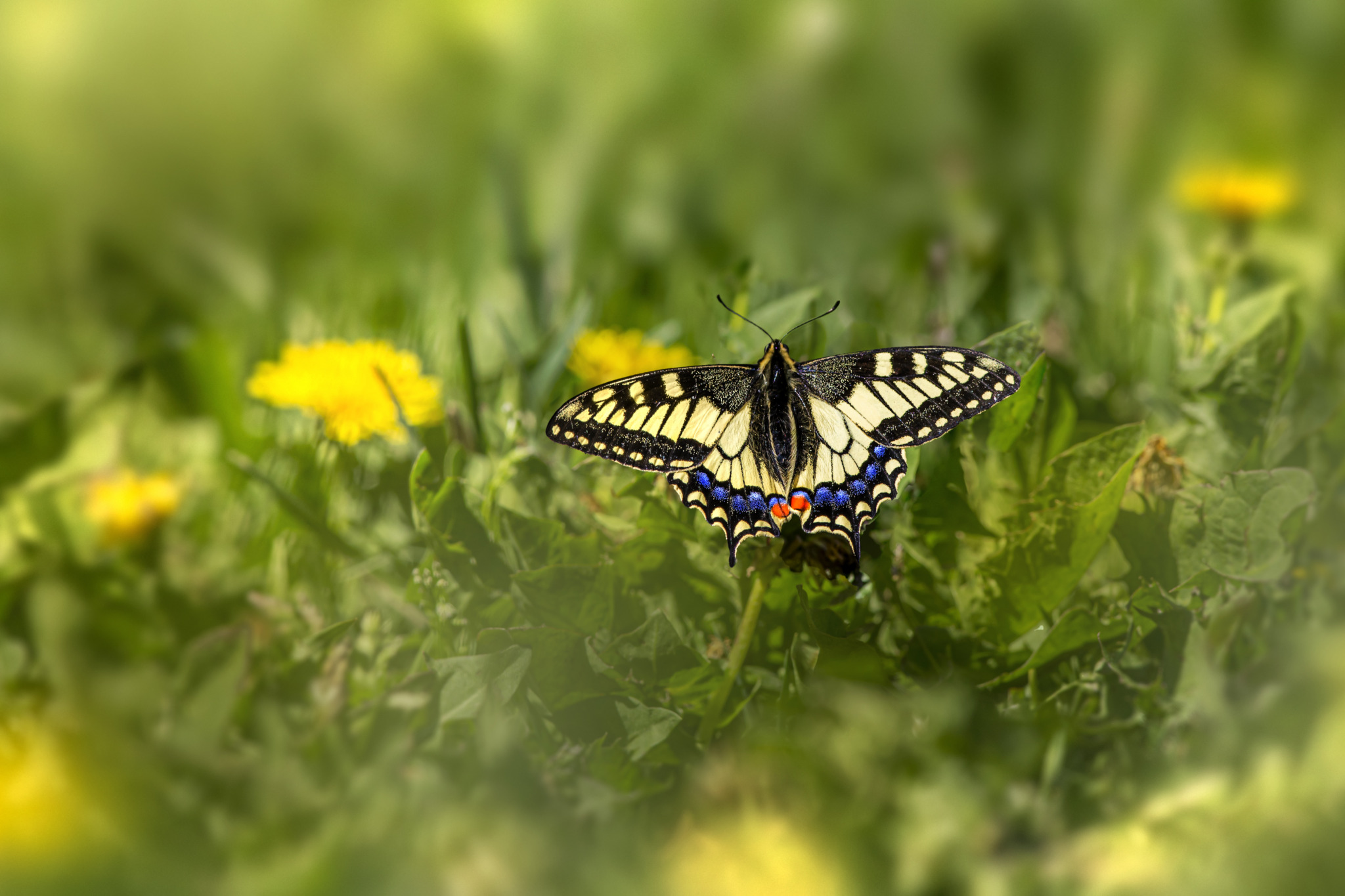The Old World Swallowtail (Papilio machaon) is a striking butterfly species found across Europe, Asia, and North Africa. Here’s some information about this beautiful insect:
- Appearance: The Old World Swallowtail is easily recognizable by its large size and distinctive markings. It has wings that are predominantly yellow with black veins and a row of blue and red spots along the edges. There are also characteristic black stripes on the wings, giving it a striking appearance. Its wingspan can range from about 5 to 9 centimeters.
- Habitat: These butterflies inhabit a variety of habitats, including meadows, grasslands, open woodlands, and gardens. They are often found in areas where their larval host plants grow abundantly.
- Range: The Old World Swallowtail has a wide distribution, ranging from Europe and Asia to North Africa. It is also found in parts of North America, where it has been introduced.
- Lifecycle: Like other butterflies, the Old World Swallowtail undergoes complete metamorphosis, with four distinct life stages: egg, larva (caterpillar), pupa (chrysalis), and adult. The larvae feed on the leaves of various plants in the carrot family (Apiaceae), including fennel, parsley, dill, and carrot.
- Behavior: These butterflies are strong and agile fliers, often seen gliding gracefully over meadows and other open areas in search of nectar-rich flowers. They are particularly attracted to purple, blue, and yellow flowers.
- Mating: During the breeding season, males engage in aerial pursuits to court females. After mating, females lay their eggs on suitable host plants, where the larvae will hatch and feed.
- Cultural Significance: The Old World Swallowtail has cultural significance in many regions and has been featured in art, literature, and folklore throughout history. It is admired for its beauty and grace and is often seen as a symbol of transformation and renewal.
Overall, the Old World Swallowtail is a magnificent butterfly species that adds beauty to the natural landscapes it inhabits.
Views: 50
Subscribe to the newsletter:
